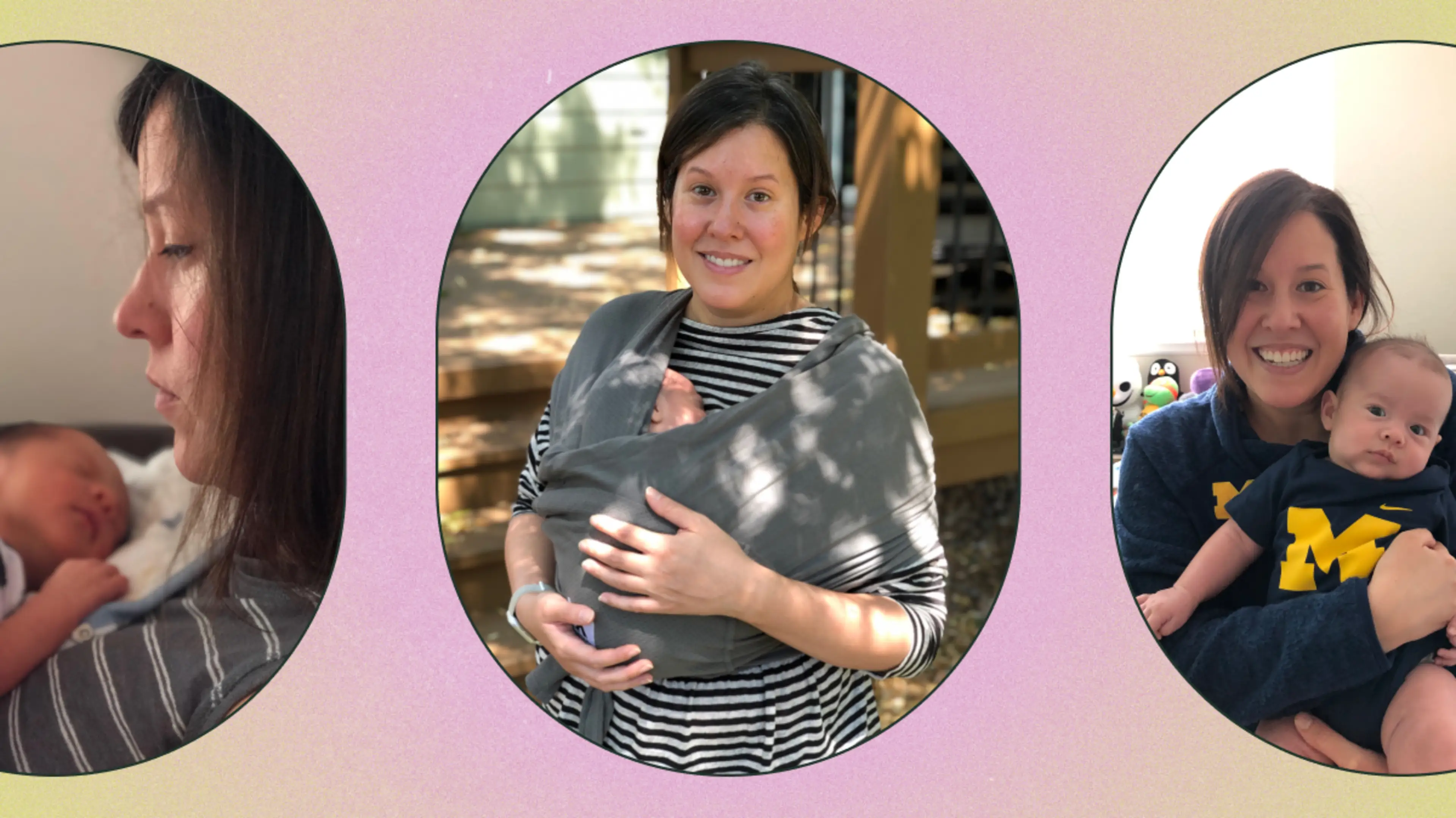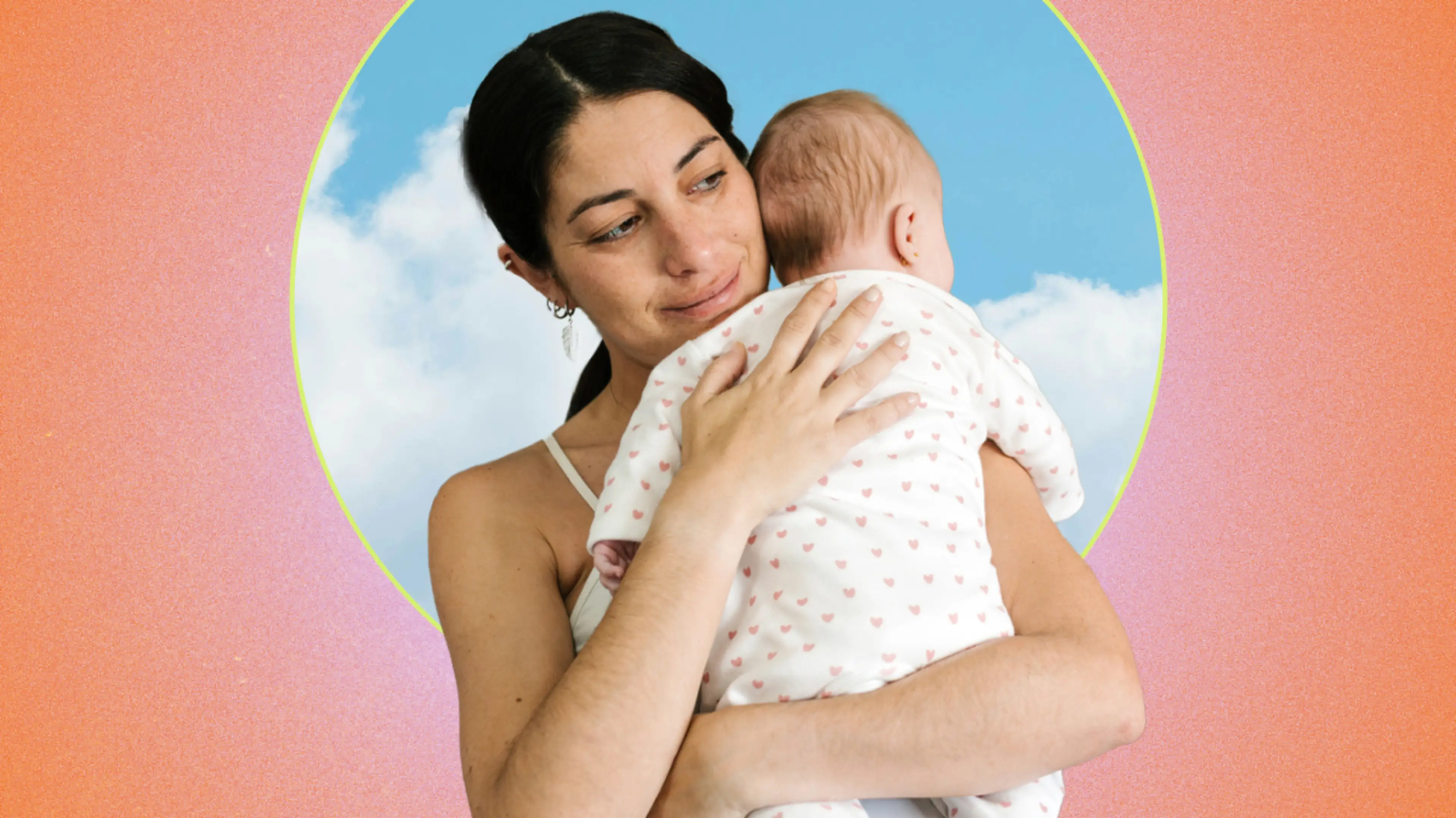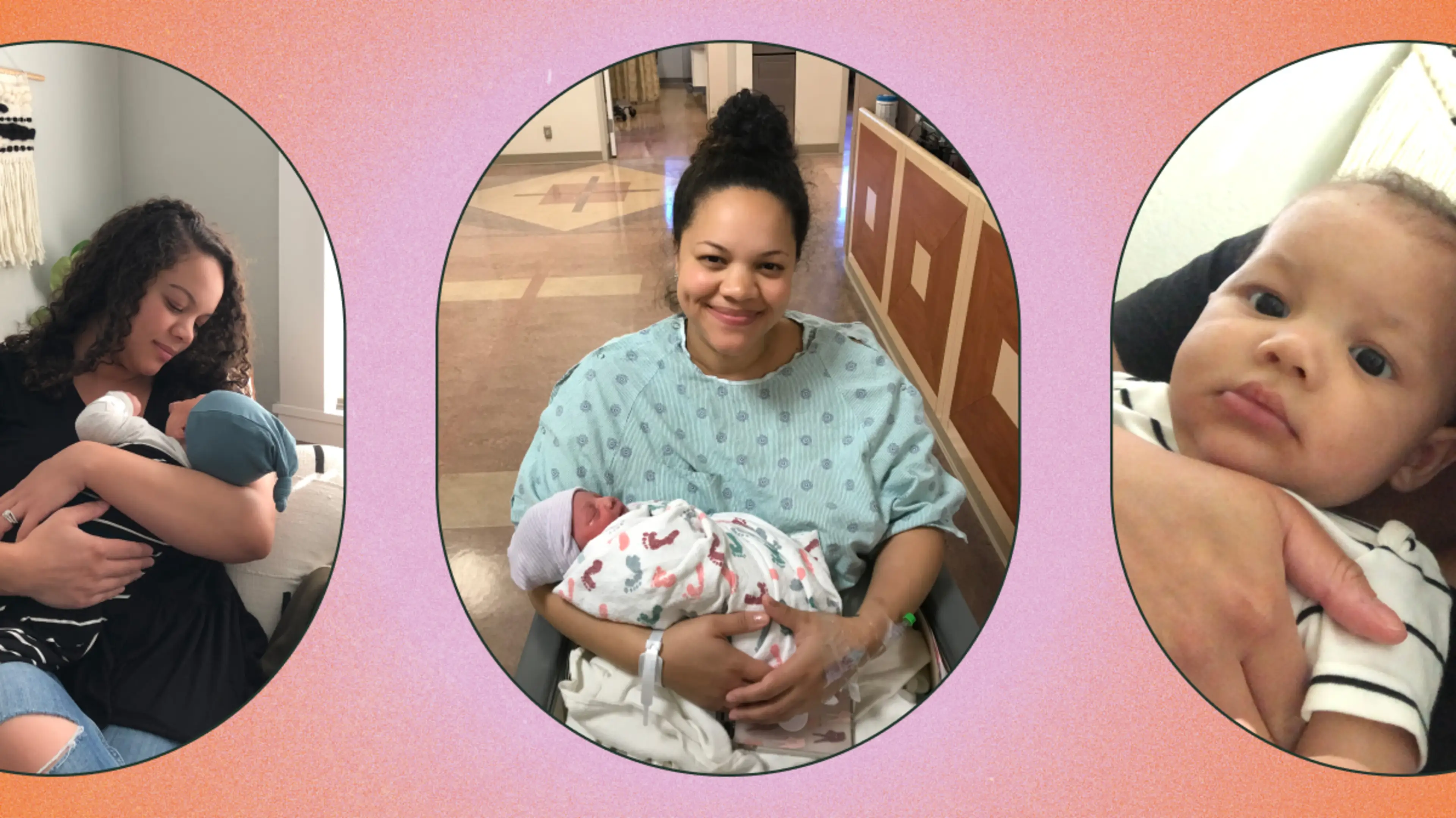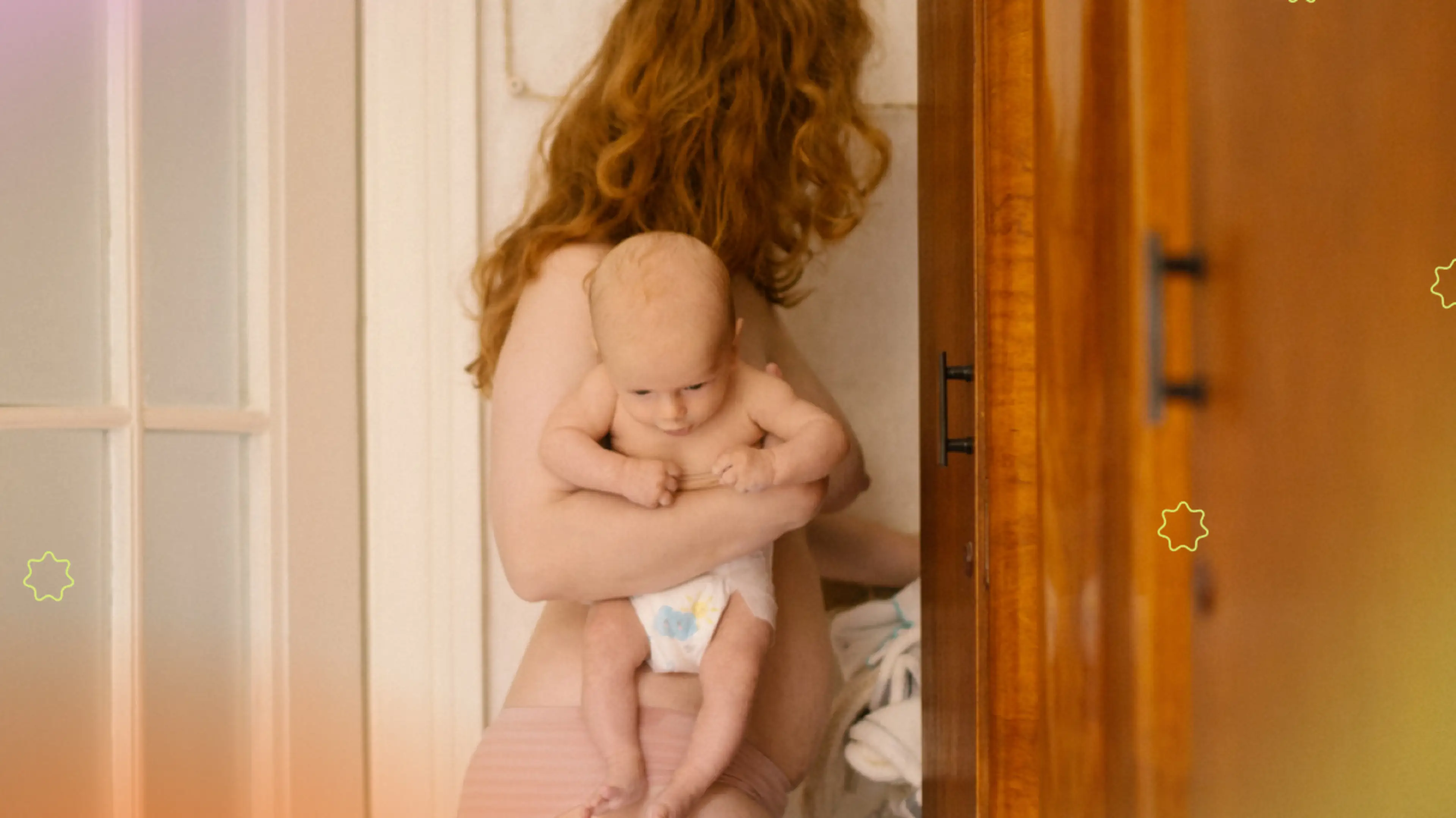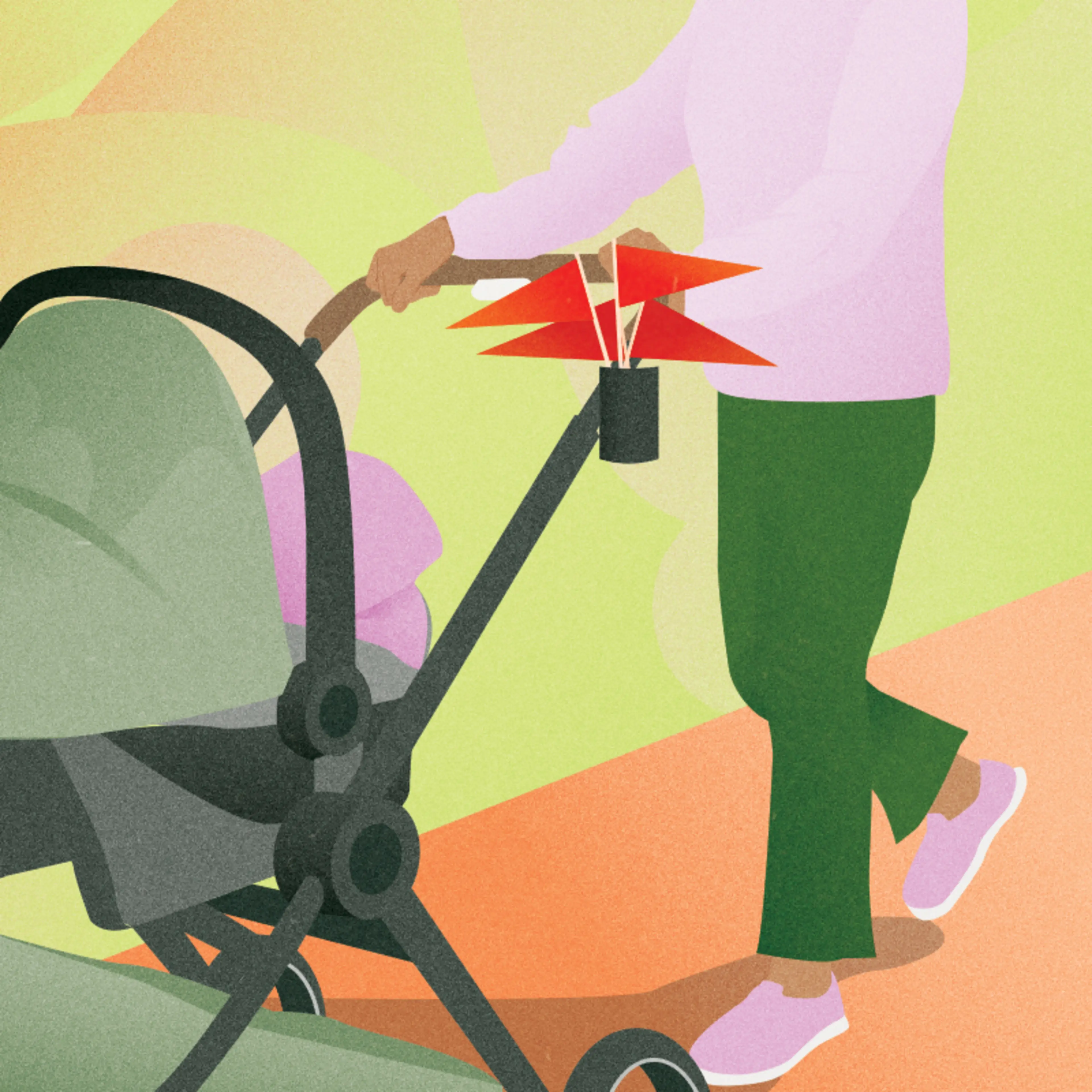Before I gave birth, I was constantly reminded by friends and medical professionals to watch out for postpartum depression (PPD). The many handouts and lectures I received drilled the warning signs into my brain—sadness, irritability, mood swings. Having never experienced mental health issues before, I felt confident I would be able to take care of myself and the small human I was creating.
Then I gave birth, and it quickly became very clear that something wasn’t right. But the things that felt off didn’t fit the PPD checklist I was given at my pediatrician appointments.
I was terrified I was going to hurt my baby because I didn’t know what I was doing. I was scared to put him down, I worried about over- or under-dressing him at night, and I refused to eat food that had been sitting out in case it made me sick and I couldn’t take care of him. Ten million worries were invading my brain at any given moment, and I was on the verge of tears all the time while people kept telling me to enjoy the newborn snuggles. But this sudden, intense worrying didn’t fit the symptoms of PPD.
Finally, I made an appointment with my therapist and she suggested I might have something I had never heard of: postpartum anxiety. As I talked with my friends about my anxiety, I heard from others who suffered from other postpartum disorders that we had not been warned about.
If this sounds familiar, you should know that you are not alone—20-25%1 of new parents in the United States experience a postpartum mood and anxiety disorder, though one study2 found that the number can be up to 56% for Black women. It turns out, drastic hormone changes and lack of sleep after giving birth leave your brain vulnerable to mental health issues, and those biological factors are added to the very real stressor of having a tiny baby to care for.
The first step to getting help and finding relief is knowing that there is absolutely no shame in admitting something is wrong in the early days of parenting—it doesn’t mean you’re going to be a bad parent, it just means your brain chemicals are off a little bit.
Next, It’s important to know what signs to look for so you can get the help you need to help you enjoy parenting and be more present for your child.
Postpartum Depression
What is it?
Postpartum depression—which can affect both parents—is depression for a period of longer than two weeks following the birth of a child. (If your symptoms aren’t severe and they are limited to the first two weeks after birth, you might have a case of the baby blues.) PPD has all the signs and symptoms of regular depression (more on that below) and can appear up to a year after childbirth.
How common is it?
PPD is fairly common, with estimates that up to 10-20%3 of new mothers experience this disorder. It is thought that brand new birthing parents4 are more likely to experience PPD, with a heightened risk among moms of color. It should also be noted that a variety of cultural and societal pressures can lead to barriers in both identifying and treating PPD.
Risk factors
While more research needs to be done, it is believed that you are more likely to experience PPD if you have a personal or family history of mood disorders.
Symptoms
PPD symptoms5 are similar to that of depression, though it can sometimes be hard to parse out what is caused by the big life change of having a new baby in the house versus a symptom of the mood disorder. If you have intense mood swings, bouts of crying, or anger and irritability, you may be suffering from PPD. Another sign is sleep that is disregulated beyond the norm with a new baby, like if you have severe insomnia or can’t sleep even when the baby is asleep. Hopelessness or thoughts of harming yourself or your baby are warning signs, as is a loss of appetite (as opposed to being so busy you forget to eat). Other symptoms include withdrawing from social connections and having trouble bonding with your baby.
The Edinburgh Postnatal Depression Scale, which you will take at various pediatrician and ob-gyn visits, is generally used to identify PPD.
Treatment
PPD treatment has come a long way, even in just the past year. The most common types of care are talk therapy and/or an antidepressant. (If you are breastfeeding, your doctor will work with you to find an antidepressant that does not interfere with your milk supply.) But there is an increasing emphasis on the role peer support and social interventions can play, as well as emerging options like the first FDA-approved pill specifically formulated to treat PPD, which came on the market last year.
Postpartum Anxiety (PPA)
What is it?
Postpartum anxiety is severe worry, stress, and/or anxiety after giving birth. It shares many symptoms with PPD, and the two often appear together. In the most simplistic terms, PPA is characterized by worry, while PPD is characterized by feelings of sadness.
PPA can be affected by the postpartum hormonal rollercoaster, which means it can appear soon after giving birth or later in the postpartum period, like after you finish breastfeeding when your body experiences another round of big hormonal shifts6 .
How common is it?
One study estimated 20%7 of people experienced postpartum anxiety after childbirth. However, there is no official screening for postpartum anxiety, so it’s difficult to estimate the true extent of the condition.
Risk factors
As with PPD, you are more likely to experience postpartum anxiety if you have a previous diagnosis of anxiety disorder or mood disorder, either during pregnancy or before you conceived.
Symptoms
If you experience postpartum anxiety, you may feel panicked and/or overwhelmed all the time. You might have a racing heart, trouble sleeping, an inability to relax, and intrusive thoughts. If you’re so anxious that you’re checking on your sleeping baby multiple times a night, you may have postpartum anxiety.
One thing that helped me to recognize my own PPA was reading the stories of other women who experienced it. Not only did it make me feel not as alone, but it was helpful to see how the disorder was showing up for other women so that I could identify it in myself.
Treatment
Postpartum anxiety is treated with cognitive-behavioral therapy and anti-anxiety medications. Other things that can help include getting some good sleep (I know, one of the most annoying and hardest recommendations, but I promise it does help), talking with other parents, and physical activity.
Postpartum OCD
What is it?
Postpartum OCD is a manifestation of obsessive and/or compulsive behaviors, usually centered around the baby’s well-being. Postpartum OCD often shows up within six weeks after giving birth and it has a very sudden onset (as opposed to regular OCD, which has a slow onset).
A critical determining factor with postpartum OCD (vs postpartum psychosis) is that the parent realizes their thoughts are abnormal and is extremely unlikely to act on them.
How common is it?
Common estimates8 put the number at 3-5% (for either parent) although other studies9 have found that number to be a littler higher.
Risk factors
As with many of the other postpartum mental health disorders on this list, the biggest risk factor for developing postpartum OCD is a personal or family history of OCD, although it is believed that other things like sleep deprivation and hormonal changes can also affect the disorder.
Symptoms
If you experience postpartum OCD, you could become fixated on dropping the baby, worry that the baby might get sick from its environment, or be more disturbed by concerns about harming or accidentally molesting the baby. The way these fears might manifest is in compulsions like excessively washing your hands or checking on the baby. Intrusive thoughts are a symptom of both postpartum anxiety and postpartum OCD, but with the latter, it may result in fear of being alone with your baby or avoiding holding or caring for your child.
Treatment
Many woman experiencing this condition avoid getting help due to their worries about admitting the irrational thoughts they are having. If you are one of them, know that there is no shame in this condition, and that help is available as soon as you reach out. The main forms of treatment for postpartum OCD include medication and cognitive-behavioral therapy to help you confront your fears and reduce their hold on you.
Postpartum PTSD
What is it?
Postpartum PTSD is usually the result of a traumatic birth. Diagnosis requires meeting the criteria official criteria for PTSD, which include reliving the event in a way that disrupts your normal life, avoiding anything related to the trauma, feelings of numbness and isolation, and overreacting to situations in your life.
It’s important to note that PTSD can be caused by both actual birth trauma and perceived birth trauma, meaning that just because you think nothing “that bad” happened during your birth, in comparison to other stories you hear, if it was traumatic to you, you might be experiencing very real symptoms of PTSD.
How common is it?
According to Postpartum Support International, 9% of birthing parents10 have symptoms of postpartum PTSD.
Risk factors
While a traumatic childbirth is the main risk factor of postpartum PTSD, there are other things that can contribute to developing the disorder, including having a baby who has to spend time in the NICU, feeling isolated during or after childbirth, high levels of postpartum stress or anxiety (including PPD and PPA), and having a previous experience of physical or sexual trauma.
Symptoms
Postpartum PTSD often involve flashbacks or nightmares about the event, though a symptom can also be avoiding anything that is a reminder of what you went through. Some people who experience PTSD post-birth also have anxiety, panic attacks, and feelings of being disconnected from reality.
Treatment
Similar to other postpartum disorders, PTSD is often treated with therapy, including cognitive behavioral and group therapy. Another therapeutric treatment that has been shown to help with processing traumatic events is eye movement desensitization and reprocessing therapy (EMDR), which can be administered by qualified therapists. There are also some medications that can be used in the treatment of PTSD.
Postpartum Psychosis
What is it?
Postpartum psychosis is a very rare occurrence in which a new parent’s sense of reality is disrupted. It usually shows up within the first six weeks after giving birth, and it’s considered a psychiatric emergency involving hallucinations, delusions, paranoia, mania, insomnia, and/or feeling like you’re having an out-of-body experience. Unlike postpartum OCD, which can involve intrusive thoughts that would never be acted on, postpartum psychosis carries a significant risk of acting out the harm on yourself or the baby.
While postpartum psychosis is characterized by a sudden onset of symptoms, it generally lasts only a short time and it responds rapidly to treatment.
How common is it?
High estimates put postpartum psychosis at only 0.26%11 of births. While it is not common, there is also no standard screening for the disorder.
Risk factors
There isn’t a whole lot known about the risk factors of postpartum psychosis, other than that it may be triggered by the hormone fluctuations and lack of sleep that characterize the first weeks after giving birth. It is also believed that there may be a link between other mental health conditions, like bipolar disorder, and postpartum psychosis, though more research is needed.
Symptoms
Postpartum psychosis can look like many things. My friend described it as “feeling drunk all the time.” It could mean experiencing hallucinations or delusions, like believing your baby is possessed or that they are a reincarnation of a holy figure. It could mean insisting you never gave birth. It could be a catatonic state.
People who have postpartum psychosis can experience symptoms12 typical of depression, like sadness, anxiety, or feelings of guilt, symptoms typical of mania, like agitation, excessive and quick talking, insomnia, or delusions of grandeur, or a combination of both.
Treatment
While postpartum psychosis is dangerous and requires immediate hospitalization, the symptoms usually fade fairly quickly once they are being addressed. Typical treatment usually involves antipsychotic drugs and/or electroconvulsive therapy (which is a lot safer and more gentle today than pop culture usually portrays).
Please note: If a loved one is exhibiting signs of postpartum psychosis, stay calm, do not leave them by themselves or alone with children, and get emergency help immediately.
Getting Help
Having a baby is a world-changing event, and there are just as many experiences you can have postpartum as there are cute baby faces. For some, the early days are filled with sunshine and rainbows and newborn snuggles. Others can experience some serious mental health challenges in the weeks and months after giving birth. More common, though is a mix of both.
The most important thing to remember if you experience distress after having a baby in a way that disrupts your ability to function, is that it doesn’t mean you are a bad parent. Be honest about the help you need: talk to your loved ones about what’s going on, join a peer group, find a therapist, and consult with your doctor.
When I was dealing with my postpartum anxiety, everyone kept telling me that it would get better, which I found to be very frustrating. I wanted answers—when does it get better? What changes? While the specifics might vary person-to-person, a big part of feeling better for me was identifying the problem and realizing my anxieties were just that—anxiety, not reality. I got help, prioritized sleep, and am now finally able to relish being a parent.


